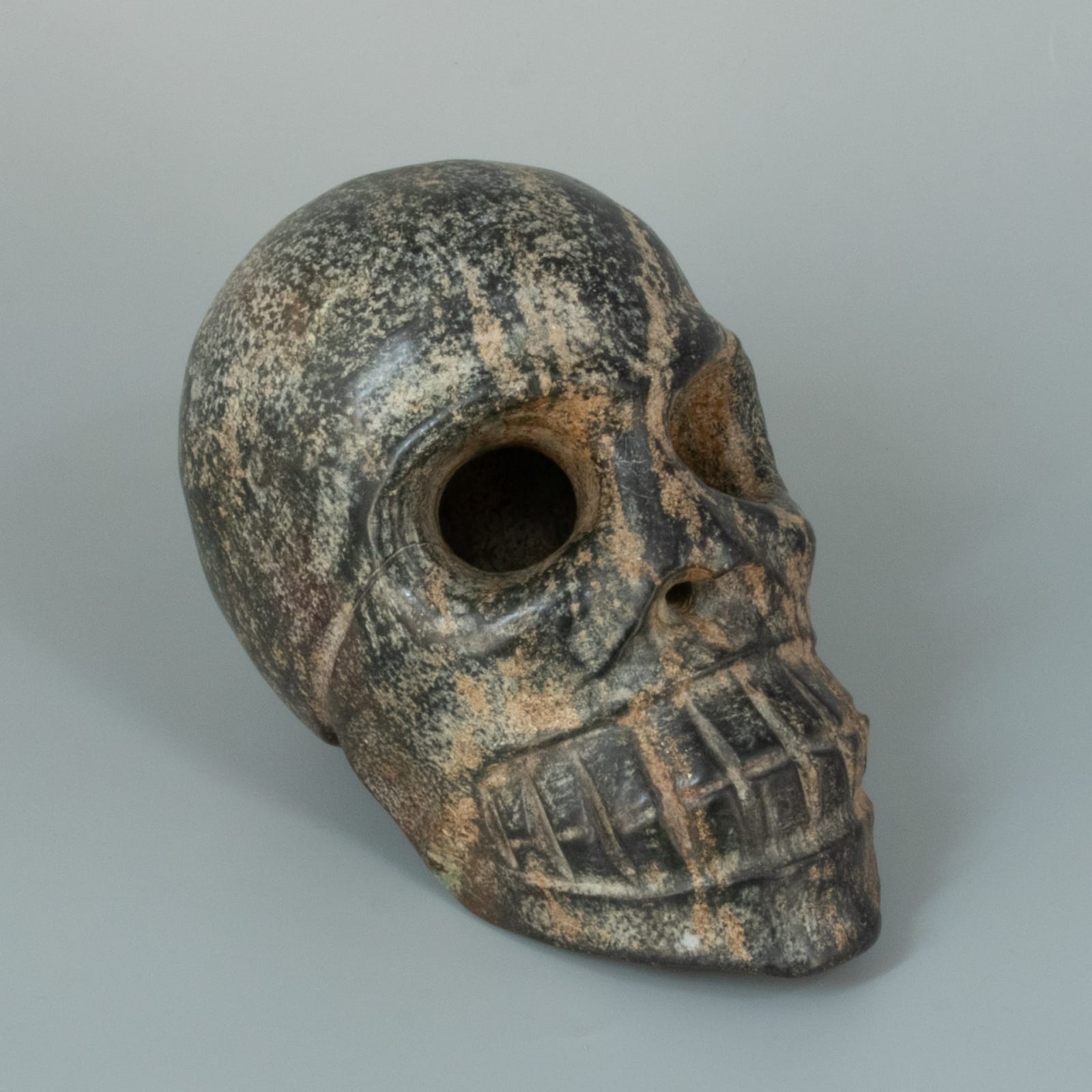Aztec Stone Skull, 13th Century - 15th Century CE
Stone
20 x 16 x 9 cm
7 7/8 x 6 1/4 x 3 1/2 in
7 7/8 x 6 1/4 x 3 1/2 in
ES.6465
Further images
The Aztec civilization is perhaps the most celebrated of the ancient Mesoamerican cultures. Their empire stretched throughout northern Mexico and was surpassed in size only by that of the Incans....
The Aztec civilization is perhaps the most celebrated of the ancient Mesoamerican cultures. Their empire stretched throughout northern Mexico and was surpassed in size only by that of the Incans. Tenochtitlan (modern-day Mexico City) was the center of their religious and political systems. The city was composed of a group of island located in the center of Lake Texcoco, earning it the nickname “Venice of the New World.” By the time the Spanish Conquistadors arrived in the early 16th Century, led by the infamous Hernan Cortes, Tenochtitlan was by far larger than any city they could have seen in Europe. Today, the Aztec are remembered for their grand temple complex ruins, for their intricate calendar system, and for the few examples of their art that survive today. Aztec art was primarily ecclesiastical and is renowned for its powerful nature. Highly adept at working with stone, the Aztec artists created artworks that were both grand in scale, as evidenced in their temple architecture, and relatively small in size. Like many cultures, the Aztecs believed that many animals had supernatural symbolic associations. Therefore, although the Aztec gods were usually visualized in human form, most gods also had animal aspects. Moreover, it was believed that both men and gods could, at certain times, actually change themselves into powerful animals.
This remarkable sculpture of a skull strikes deeply into our primordial consciousness. The belief that death is a crucial element in the continuation of life is a belief shared by many Meso-American people. The Maya and Aztecs both regarded the 'other world' as an integral part of the physical world, and that the barrier separating the two was like a revolving door. Therefore, cults venerating and appeasing death flourished for centuries, and are still a fundamental part of many cultures. The unadorned power of this stone skull is elemental, forceful and penetrating. The delicate carving of the face and handsome modeling of the head is complimented by the stone's natural color, It is easy to imagine this skull being a dramatic and practical part in esoteric rituals long since forgotten, but still alive in the aura of the stone.
This remarkable sculpture of a skull strikes deeply into our primordial consciousness. The belief that death is a crucial element in the continuation of life is a belief shared by many Meso-American people. The Maya and Aztecs both regarded the 'other world' as an integral part of the physical world, and that the barrier separating the two was like a revolving door. Therefore, cults venerating and appeasing death flourished for centuries, and are still a fundamental part of many cultures. The unadorned power of this stone skull is elemental, forceful and penetrating. The delicate carving of the face and handsome modeling of the head is complimented by the stone's natural color, It is easy to imagine this skull being a dramatic and practical part in esoteric rituals long since forgotten, but still alive in the aura of the stone.













